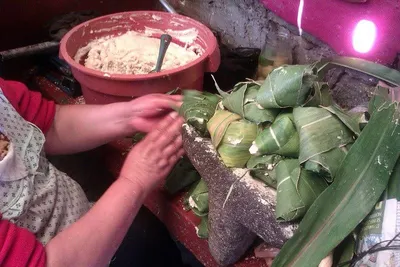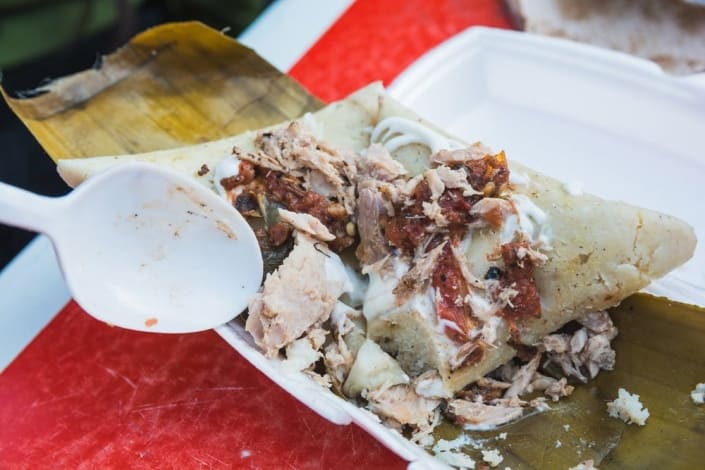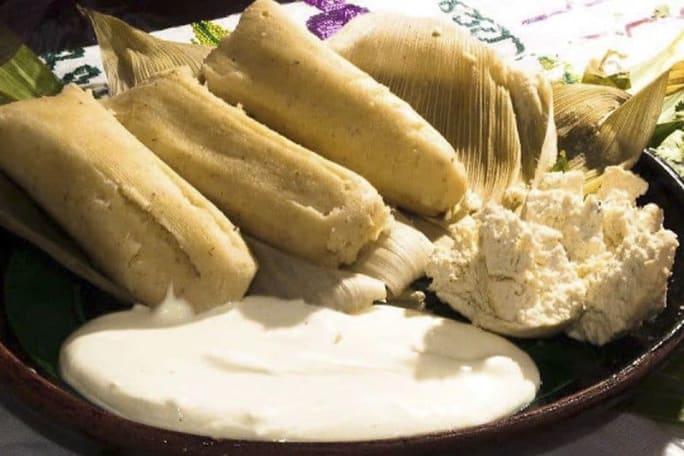
Corundas vs. Uchepos: A Tasty Tamale Showdown
Corundas vs. Uchepos: A Tasty Tamale Showdown
Corundas and uchepos are the two signature foods from Michoacan that delight those who eat them.
While the Corundas are more traditional in the center and north of the state, like Paracho, the uchepos are from the Tierra caliente (the southern part).
Although it is unclear who and when they started making them, historical notes link this kind of “tamale” in harvest rituals or ceremonies with the Purépecha Royalty.
It is believed that initially, people ate them alone; however, accompaniments such as sauce and cream were added over time.
Unlike other types of tamales, corundas are salty and eaten with cheese, cream, or jocoque (a dairy product based on fermented milk) and spicy sauces made from tomato, serrano chile, rajas, and sometimes pork.
Another marked difference is that they are wrapped in corn cane leaves, not corn husks, in a triangular shape that requires some practice and training.
How are Corundas made?

Chef Blanca Villagomez from Tzitzuntzan, Michoacan, explained that the main ingredient of traditional corundas is pork lard, which gives it a spongy and soft appearance and taste.
However, there is also a variant where the lard is omitted, resulting in a triangular tamale with a tough aspect.
“This is called ash tamale and is also in great demand, either because many people want to avoid the fat, or because of the particular flavor it acquires, which is also very pleasant,” Blanca commented.
Corundas from Michoacan, like their “tamale cousins,” is made from nixtamalized corn.
“The corn has to be cooked with lime and then washed and ground to form a uniform dough,” she added.
Then, the lard is beaten until it becomes a white paste. Next, the corn dough is added and kneaded until the mixture is homogeneous, and salt, baking powder, and the necessary water are added.
The procedure is the same in the case of the ashes, only without butter.
Meanwhile, to add flavor to the lard ones, cheese, a piece of meat with sauce, rajas, or chilacas can be added to the center. These are called stuffed corundas.
The cooking process takes about 90 minutes and should preferably be done in a steamer.
What are the Uchepos?

Another typical tamale of Michoacan is the uchepos, whose consumption has been generalized throughout the state, although they are traditional in the southern territories.
The primary variant of the uchepos to the traditional tamales is that tender corn is used for elaboration, not dough made of cooked mature corn.
There are sweet, salty, and stuffed versions that are eaten with milk, atole, or, in the case of the salty ones, with sauces.
They must be wrapped in fresh corn leaves for cooking to maintain their traditional flavor.
Chef Blanca Villagómez explained that uchepos are mainly used for lunch or breakfast because of their generally sweet flavor.
However, she said, the salted or stuffed ones can be used in the meal accompanied by green or red sauces with which they are bathed.
Also, like the corundas, jocoque, and cheese can be added.
She explained that uchepos are sometimes served as a dessert accompanied by condensed milk or jellies.
Fresh corn must be shelled, ground, and mixed with milk, butter, and sugar.
They are cooked in a steamer for 30 to 40 minutes and wrapped in fresh corn husks.
Corundas recipe
Ingredients:
- 1 kg of corn dough
- 250 gr of pork lard
- 1/2 cup of warm water
- 1 teaspoon salt
- 1 pinch of baking soda
- 1 1/2 cups of rice flour
- 1 1/2 cups crumbled fresh cheese
- 1 teaspoon baking powder
- 30 corn husks, enough for a tamale pot
Preparation:
- Whisk all ingredients until a smooth and homogeneous dough is obtained.
- Preheat a tamale pot with water; cover the bottom of the pot with corn husks. Place a corn cane leaf on a flat surface and perpendicularly. Place a portion of dough on it, leaving 7 centimeters free at the lower end.
- Fold the lower end over the dough to form a triangle. Continue folding the dough triangle along the entire sheet length without losing the triangular shape.
- In the end, lightly tap the ends of the triangle against the work surface to obtain a three-sided tamale. Repeat this step with the remaining dough and leaves.
- Place the corundas inside the tamale pot, cover them with the corn husks and cook for one hour or until the dough detaches easily from the husk.
As you’ve seen, uchepos are different from corundas.
Their dough is made with tender corn, butter, a little salt to enhance the flavor, sugar or piloncillo, and fresh milk, wrapped in fresh corn husks and takes only half an hour to cook.
They have the shape of a traditional tamale, as they are known in the center of the country; they are also covered with sauce, cream, and cheese; or, in their absence, with condensed milk as a dessert.